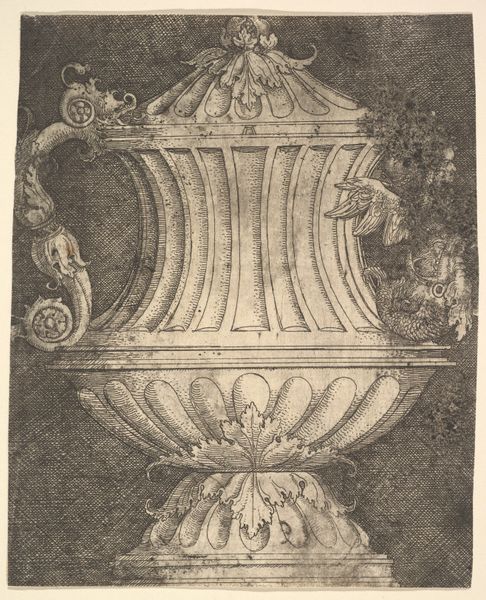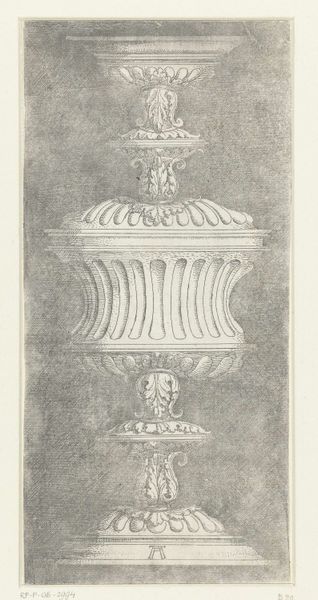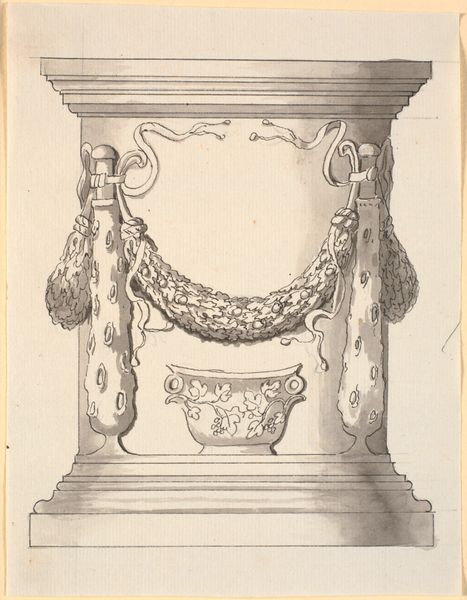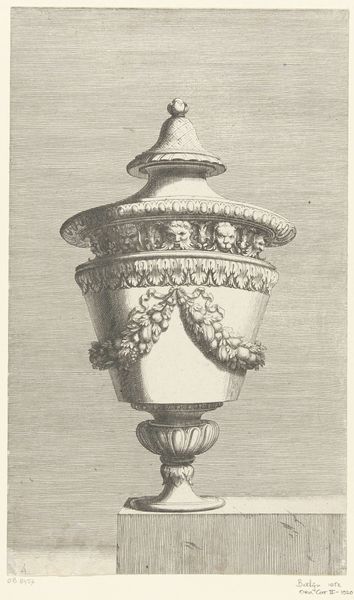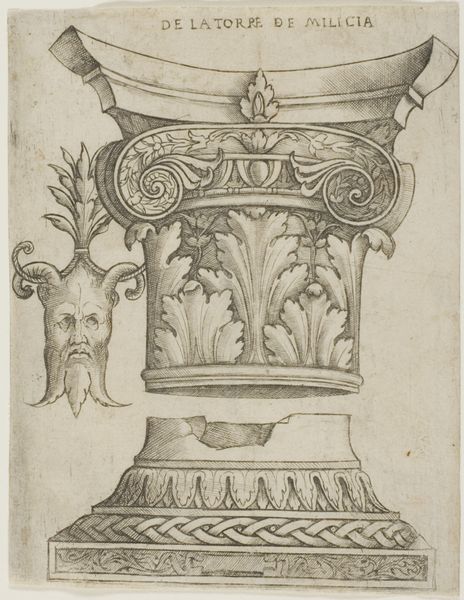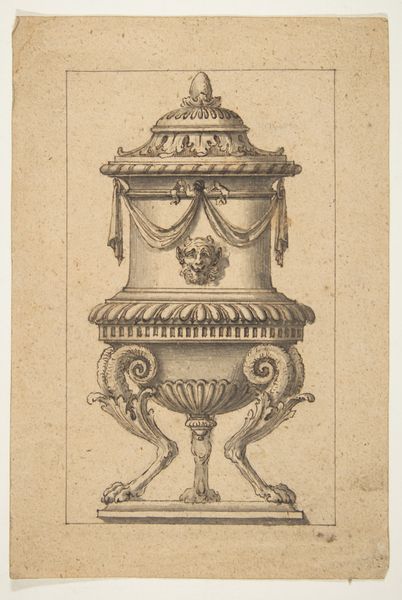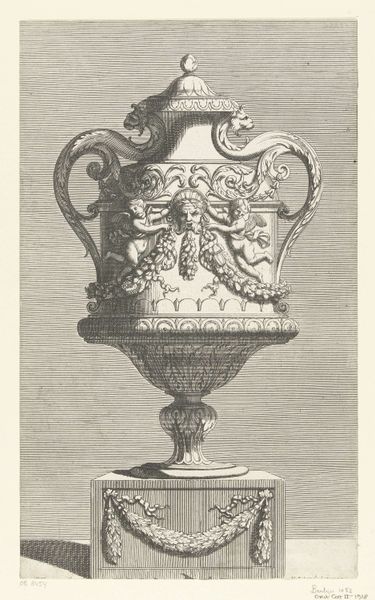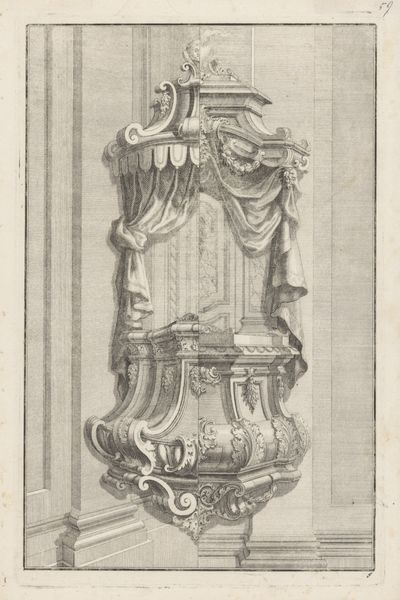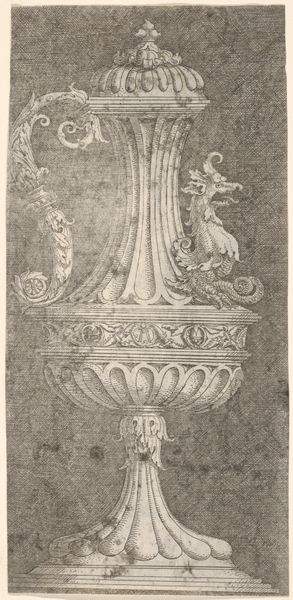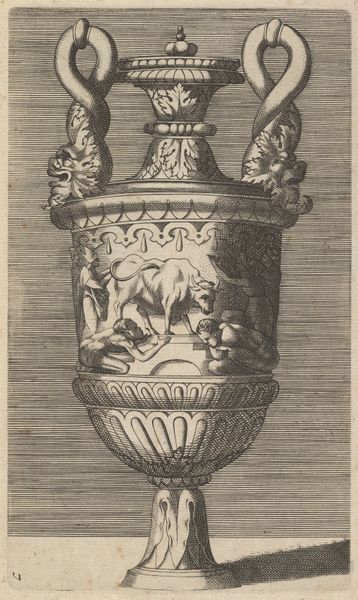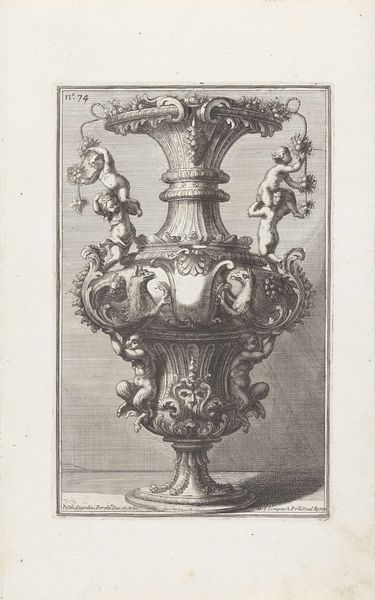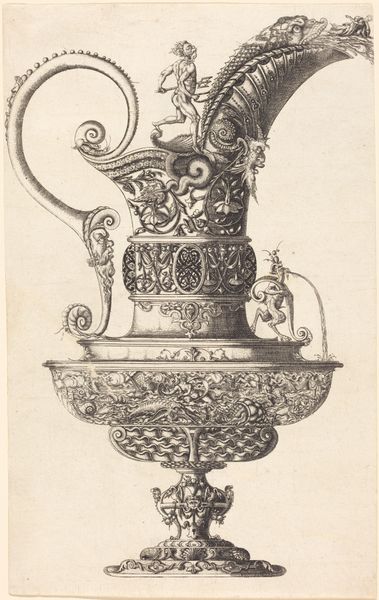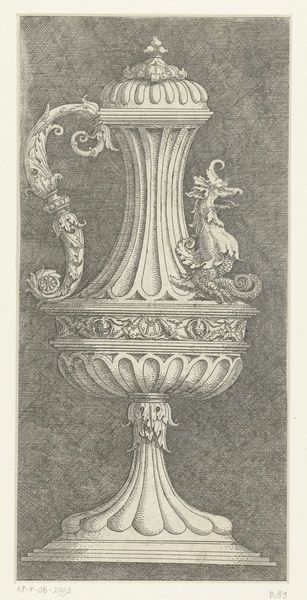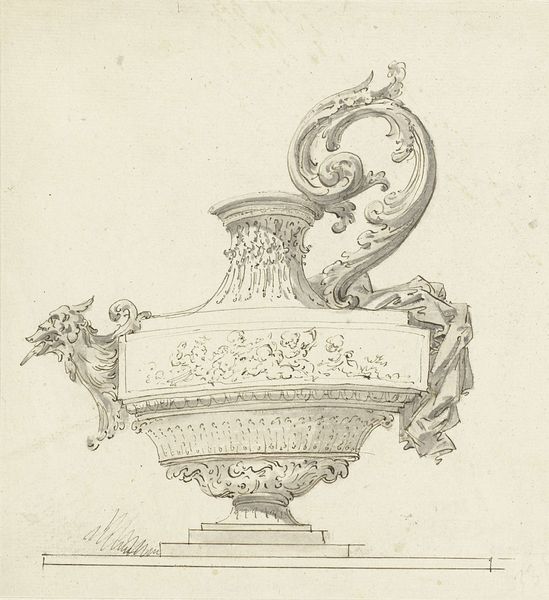
print, engraving
# print
#
form
#
11_renaissance
#
northern-renaissance
#
decorative-art
#
engraving
Dimensions: height 167 mm, width 134 mm
Copyright: Rijks Museum: Open Domain
Curator: Looking at this print, "Vase with a Grotesque Creature" by Albrecht Altdorfer, dating from the early 16th century, what's your immediate take? Editor: My eyes are drawn to the stark contrast in textures – the smooth, almost metallic quality of the vase body against the roughness of the hatching marks of the engraving. Curator: The material rendering is skillful. Notice the fantastic creatures embellishing the vase – one on the handle, the other peering out amidst foliage. These forms reference the grotesque, a popular motif in the Renaissance that blended human, animal, and plant elements. Editor: I am curious about the engraving process, what was it like to create such detailed and ornamented works? There's a significant amount of labour embodied here, considering that the object depicted also alludes to luxury and the accumulation of wealth. Curator: It's a print, so it's part of the democratization of imagery. This period sees a transition in how knowledge and art were disseminated. Such vessels weren't merely decorative objects, they carried symbolic weight—markers of status, embodiments of humanist ideals, often inspired by classical antiquity. Editor: Interesting point! I still find myself returning to the labour and craftsmanship that produces these images – these decorative prints. It makes me wonder about their function as art objects intended for display and consumption. Curator: Absolutely. Images such as these served as models for craftsmen. Prints like this helped disseminate artistic styles and decorative ideas across geographical boundaries. These images allow access into the mental landscape of the 16th century. Editor: Reflecting on it, seeing Altdorfer's work makes you aware of the economic structures of workshops involved in early printmaking; furthermore, seeing it as part of "decorative arts" gives insight into artistic circulation through material objects. Curator: Indeed, both the beauty and function exist because they point toward our continuous quest to imprint meaning on the world.
Comments
No comments
Be the first to comment and join the conversation on the ultimate creative platform.
